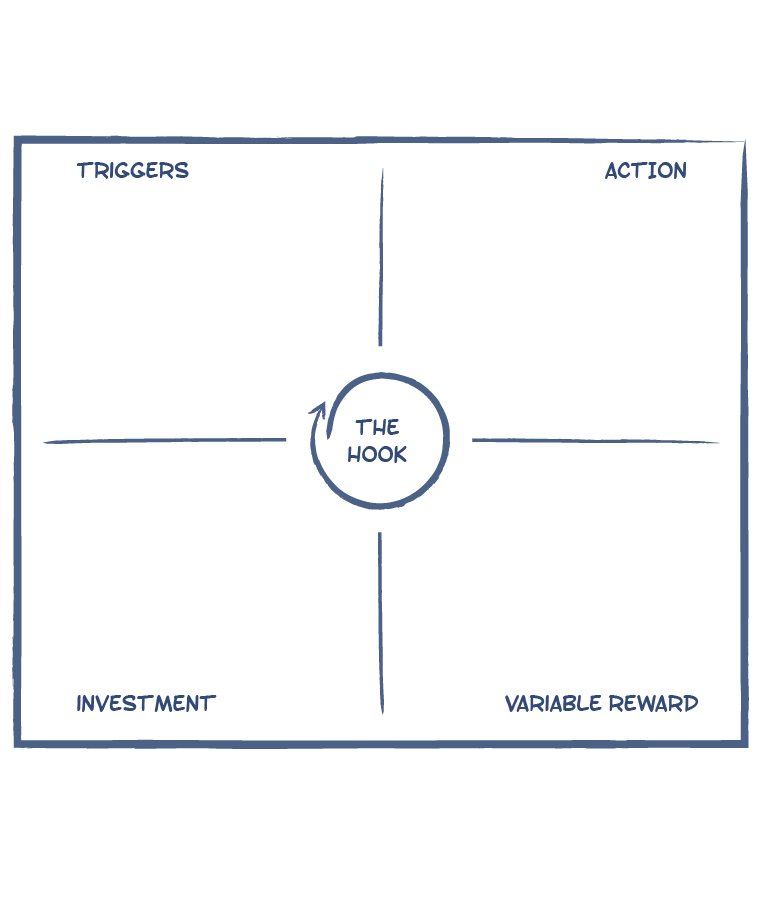BEHAVIOUR DESIGN | TOOLS
Hook Model
90-120 Min
The Hook Model is a tool used to design for frequent and engaged use of products, services and systems by users. The model focuses on identifying ways to make the user experience simpler, more engaging, and more rewarding so that users keep returning to a product or service. For a business, habit based products or services are more efficient, offer business predictability, and generate greater customer lifetime value. The model was put forward by Nir Eyal in his book, Hooked.
USE CASES
- Identify a strategy to encourage users to come back to a product or service after they have used it for the first time.
- Identify a strategy to encourage users to keep using a product or service over time.
- Identify a strategy to encourage habits and repeated behaviour in any context.
LIMITATIONS
The Hook Model was developed based on learnings of user behaviour on online platforms and social networking sites. It may therefore come across as a limited framework in some contexts.

